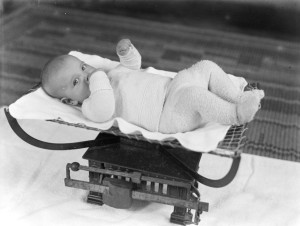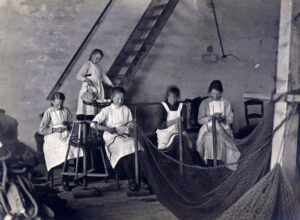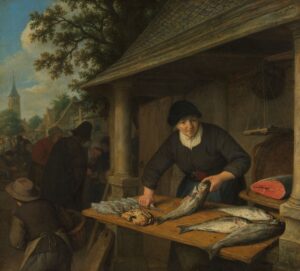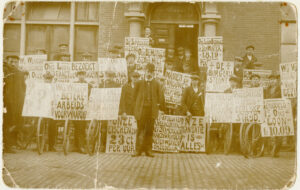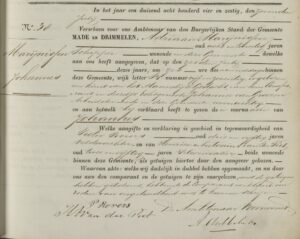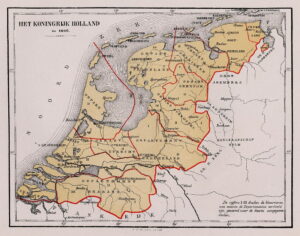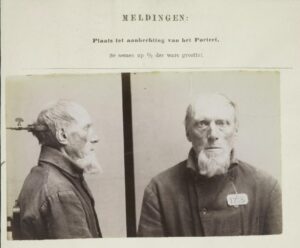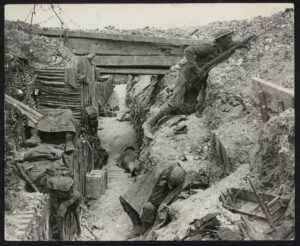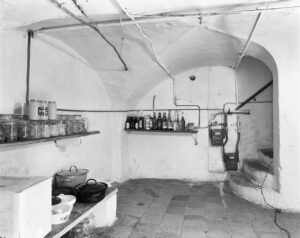In the Dutch language, the suffix '-je' indicates a diminutive. Depending on the preceding word, it can be -je, -kje, -tje, -pje, or -etje; sometimes with an -n at the end. In Low Saxon dialects in the north-east of the Netherlands, -ke, -ske, -ken, -sken, or -chien are used. The diminutive suffix is used for nouns and names. Many female names are diminutive forms of male names. The diminutive form of a name is also used for a young child, so studying the name in context is necessary to … [Read more...]
Dutch term – Nettenboetster
A nettenboetster was a female worker who made or repaired fishing nets. It was typically a job for young girls in fishing villages to supplement the family's income. … [Read more...]
The legal status of women in the Netherlands in 1664
Here are some details about the legal status of women in the Netherlands in 1664, as discussed in a book about Romano-Dutch Law. Legally, there is not much difference between men and unmarried women. [This is how the section of the book on rights of women starts, and then goes on to state several differences!] The minimum age to marry is 14 for men and 12 for women, with parental permission. Without parental permission, the minimum age to marry is 25 for men and 20 for women. Being … [Read more...]
Quick tip – Mind the long S
Up until well into the twentieth century, there were two different ways to write the letter 's' in Dutch (and other languages): the regular 's' and the long 's'. The long 's' looks like an 'f' without the crossbar. The long 's' is used in different situations. In words with double 's,' the second 's' is often written in the long form. When transcribing names or words with a long 's', make sure to transcribe it correctly as an 's.' For example, the name of my ancestor in the birth record … [Read more...]
Dutch term – Holland
One of the best-known Dutch terms is Holland. Unsurprisingly, it means "Holland." But Holland can refer to different things: Many people abroad use Holland when they mean the country of the Netherlands. For a long time, the Netherlands used it in international communication. Even the Dutch themselves use it when they cheer on the national soccer team: "Hup, Holland, Hup!" [Go, Holland, go!] Dutch immigrants are often identified as being from "Holland" in records in other countries, for … [Read more...]
Dutch Genealogy News for August 2021
Here is an overview of the new sources, websites, and news about archives announced last month. Sources Population registers (family cards) of The Hague and Loosduinen for the period 1913-1939 are now available in better quality at the website of the The Hague City Archives. The index was corrected and new full-color scans were made. Scans including people born less than 100 years ago are not shown. Census records and population registers of Boxtel between 1810 and 1938 are now … [Read more...]
Dutch term – Loopgraaf
A loopgraaf is a trench. They were most famously deployed in World War I, when the Netherlands was neutral, but also in other wars. … [Read more...]
Quick tip – Video about using WieWasWie
FamilySearch features a helpful video where Fritz Juengling explains how to use the website WieWasWie (Who Was Who) for researching your ancestors in the Netherlands. Go to the video … [Read more...]
Dutch term – Kelder
A kelder is a cellar. Kelders were usually used for cold storage, typically accessible from the kitchen. You can come across the term in estate inventories that list the contents of a house by room. Some modern houses have a kelderkast [cellar closet/cupboard] that is usually just storage under the stairs rather than a real cellar. … [Read more...]
